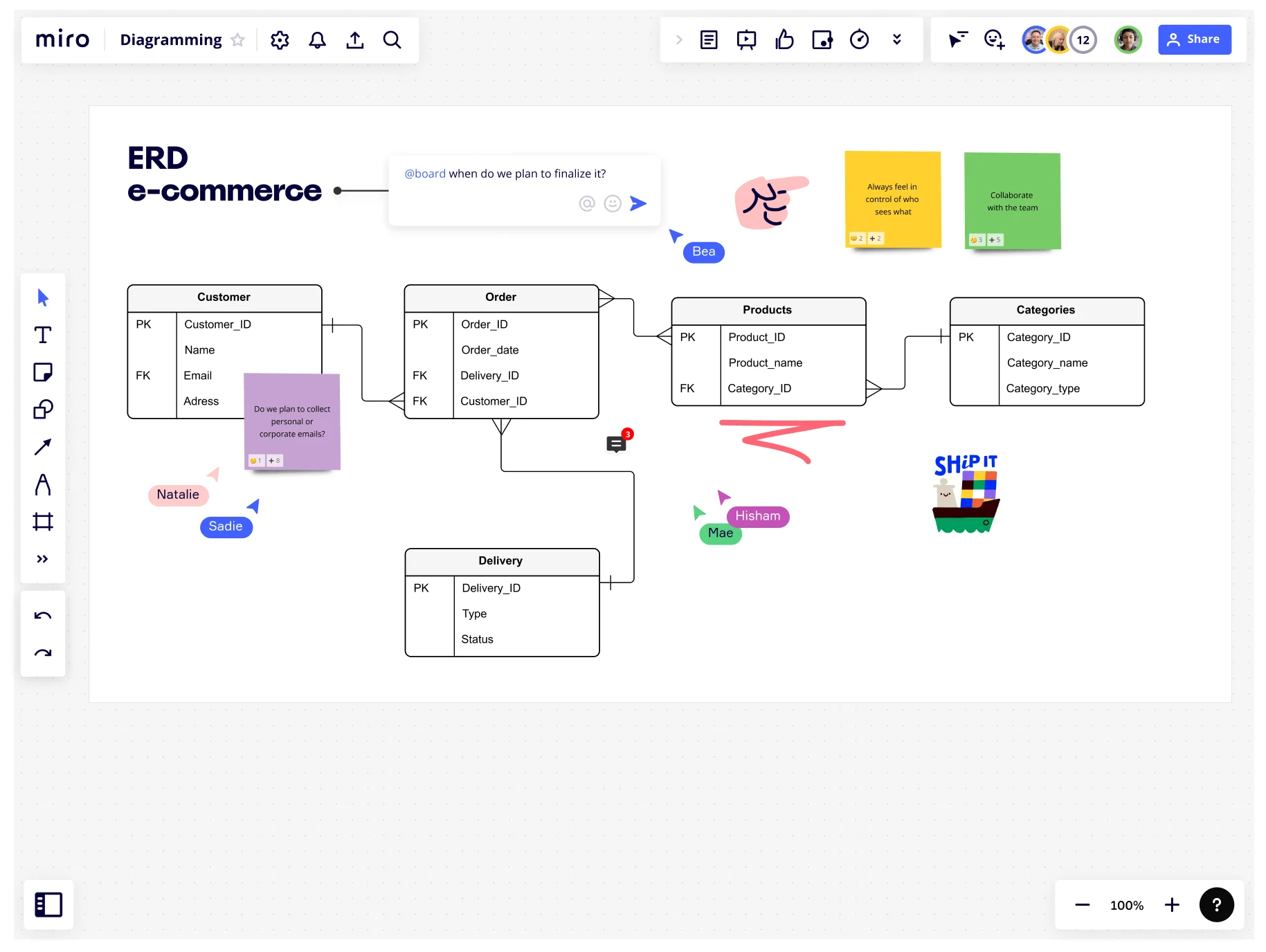
How to Read an ER Diagram

How to Read an Entity Relationship Diagram
Understanding how to interpret ER diagrams is crucial for professionals working with databases. In this article, we will walk you through the key components of an ER diagram, provide step-by-step guidance on how to read an ER diagram effectively and offer advanced techniques to enhance your understanding. Let's dive in!
Key Components of an ER Diagram
ER diagrams consist of several essential components that represent the structure and relationships within a database. By familiarizing yourself with these components, you'll be better equipped to read and analyze ER diagrams effectively.
Entities in ER diagrams
Entities are the fundamental building blocks of an ER diagram. They represent objects or concepts in the real world, such as customers, products, or employees. Each entity is typically depicted as a rectangular box in the diagram.
To understand how to read an ER diagram, focus on the entities. The entity names serve as crucial indicators of the type of object they represent, enabling you to navigate the diagram and comprehend its contents.
Relationships between entities
Relationships illustrate the connections between entities in an ER diagram. They demonstrate how entities interact with each other and define the associations between them. Relationships can take the form of one-to-one, one-to-many, or many-to-many.
When learning how to read an ER diagram, pay close attention to the lines connecting entities. These lines, along with the accompanying cardinality indicators, help you understand the nature of the relationships and the number of instances involved.
Attributes in ER diagrams
Attributes provide further details about entities in an ER diagram. They represent the characteristics or properties of an entity, such as the customer's name, address, or age. Attributes are often listed within the entity box, connected by lines.
To grasp the full meaning of an ER diagram, analyze the attributes associated with each entity. These attributes offer valuable insights into the specific information that is stored and managed within the database.
Reading and Interpreting an ER Diagram
Now that we have covered the key components of an ER diagram, let's delve into the process of reading and interpreting these diagrams.
Entity-Relationship Mapping
To understand how entities in an ER diagram translate to tables in a database, it is essential to establish entity-relationship mapping. This mapping determines how the attributes of an entity correspond to the columns of a table and how relationships are represented through keys.
By identifying the primary keys and foreign keys, you can establish the relationships between tables, enabling you to navigate and query the database effectively while reading an ER diagram.
Understanding Cardinality
Cardinality defines the number of instances participating in a relationship. It describes the constraints and associations between entities. Common cardinality notations include "1" (one instance), "M" (many instances), or specific numerical ranges.
When reading an ER diagram, understanding cardinality is crucial to comprehending the relationships accurately. It allows you to determine whether a relationship is one-to-one, one-to-many, or many-to-many, enhancing your ability to interpret the diagram effectively.
Analyzing Constraints
Participation constraints play a crucial role in an ER diagram. They indicate whether an entity's participation in a relationship is optional (partial participation) or mandatory (total participation). Analyzing these constraints ensures data integrity and accurate representation of real-world scenarios.
By identifying optional and mandatory relationships, you gain insights into the rules and constraints that govern the interaction between entities. This knowledge empowers you to make informed decisions during database design and maintenance while reading an ER diagram.
Advanced Techniques for Reading ER Diagrams
Now that you have a solid foundation in reading ER diagrams, let's explore some advanced techniques that will further enhance your understanding of how to read an ER diagram.
Subtypes and Supertypes
In complex database systems, subtypes and supertypes come into play. These represent inheritance relationships, where certain entities inherit properties from a more general entity.
By recognizing subtype and supertype entities in an ER diagram, you can identify hierarchical relationships and understand how specialized entities inherit attributes and relationships from their parent entities. These concepts are essential to consider when learning how to read an ER diagram.
Weak Entities
Weak entities depend on identifying relationships with strong entities for their existence. They cannot be uniquely identified by their attributes alone. Recognizing weak entities helps you understand their specific requirements and dependencies on other entities.
By identifying weak entities, you can establish the necessary relationships and ensure the integrity and accuracy of your database design. These considerations contribute to a comprehensive understanding of how to read an ER diagram effectively.
Best Practices and Tips for Reading ER Diagrams
To conclude our guide on how to read an ER diagram, let's explore some best practices and tips that will further enhance your ability to interpret ER diagrams accurately.
Simplifying Complex ER Diagrams
When faced with complex ER diagrams, it can be helpful to break them down into smaller, more manageable parts. By simplifying the diagram, you can focus on specific areas of interest and avoid feeling overwhelmed while reading an ER diagram.
Documentation and Notation Standards
Following documentation and notation standards ensures consistency and clarity when reading and sharing ER diagrams. Familiarize yourself with common symbols and conventions used in ER diagrams, as adhering to these standards improves communication and understanding. These practices greatly aid in comprehending how to read an ER diagram efficiently.
By understanding the key components, entity-relationship mapping, cardinality, and constraints, you have acquired the skills to read and interpret ER diagrams effectively. Now that you know how to read a diagram, you may want to explore creating your own with Miro's intuitive ER diagram tool. Both reading and creating ER diagrams, you will further enhance your ability to navigate complex diagrams and make informed decisions in your database design and analysis endeavors.